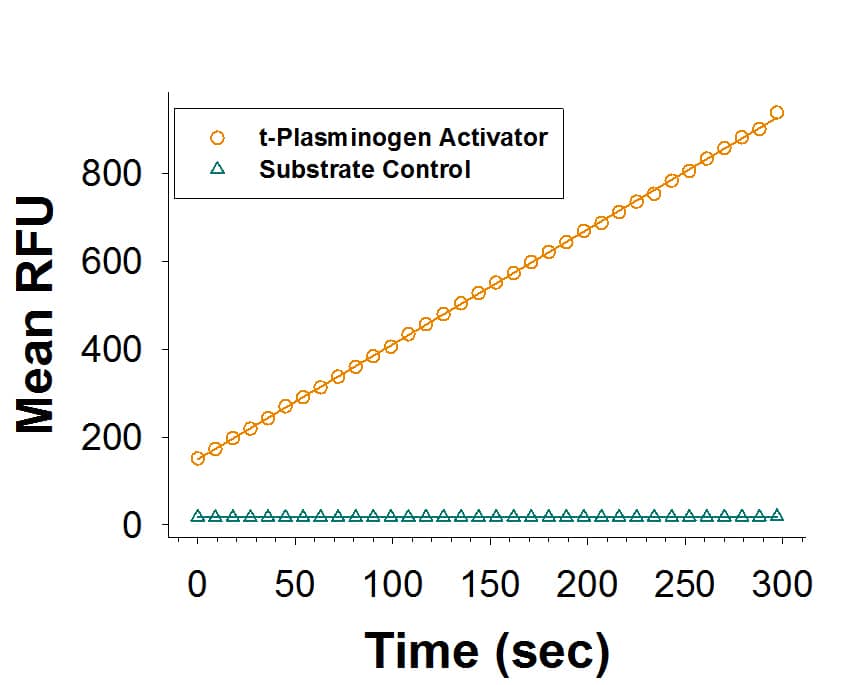Recombinant Human t-Plasminogen Activator/tPA Protein, CF
R&D Systems, part of Bio-Techne | Catalog # 7449-SE

Key Product Details
Product Specifications
Source
Chinese Hamster Ovary cell line, CHO-derived human t-Plasminogen Activator/tPA protein
Met1-Pro562, with a C-terminal 6-His tag
Single-chain proform was expressed, purified, activated with thermolysin to a 2-chain protease and further purified.
Met1-Pro562, with a C-terminal 6-His tag
Single-chain proform was expressed, purified, activated with thermolysin to a 2-chain protease and further purified.
Purity
>85%, by SDS-PAGE visualized with Silver Staining and quantitative densitometry by Coomassie® Blue Staining.
Endotoxin Level
<1.0 EU per 1 μg of the protein by the LAL method.
N-terminal Sequence Analysis
Ser36 (Chain A) and Ile311 (Chain B)
Predicted Molecular Mass
31 kDa (Chain A), 29 kDa (Chain B)
SDS-PAGE
30-40 kDa, reducing conditions
Activity
Measured by its ability to cleave a peptide substrate, N-carbobenzyloxy-Gly-Gly-Arg-7-amido-4-methylcoumarin (Z-GGR-AMC).
The specific activity is >190 pmol/min/μg, as measured under the described conditions.
The specific activity is >190 pmol/min/μg, as measured under the described conditions.
Reviewed Applications
Read 1 review rated 5 using 7449-SE in the following applications:
Scientific Data Images for Recombinant Human t-Plasminogen Activator/tPA Protein, CF
Recombinant Human t-Plasminogen Activator/tPA Protein Enzyme Activity
Recombinant Human t-Plasminogen Activator (Catalog # 7449-SE) is measured by its ability to cleave a peptide substrate, N-carbobenzyloxy-Gly-Gly-Arg-7-amido-4-methylcoumarin (Z-GGR-AMC).Formulation, Preparation and Storage
7449-SE
| Formulation | Supplied as a 0.2 μm filtered solution in MES, NaCl and CaCl2. |
| Shipping | The product is shipped with polar packs. Upon receipt, store it immediately at the temperature recommended below. |
| Stability & Storage | Use a manual defrost freezer and avoid repeated freeze-thaw cycles.
|
Background: t-Plasminogen Activator/tPA
References
- Lijnen H.R. and D. Collen (2004) Handbook of Proteolytic Enzymes (ed. Barrett, et al.) p. 1684, Academic Press, San Diego.
Long Name
Tissue Plasminogen Activator
Alternate Names
Alteplase, PLAT, Reteplase, T-PA, tPlasminogen Activator
Gene Symbol
PLAT
UniProt
Additional t-Plasminogen Activator/tPA Products
Product Documents for Recombinant Human t-Plasminogen Activator/tPA Protein, CF
Product Specific Notices for Recombinant Human t-Plasminogen Activator/tPA Protein, CF
For research use only
